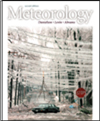
|  |
Features- Chapters grouped into units, each with a central question to explore. Gives student rationale for learning the content, focuses on questions of interest to the student, chunks book into pieces between chapter and everything: easier to digest and to mark progress.
- Chapters divided into sections, with checkpoints that review last few pages & ask questions to check learning. Keeps students from wandering on through the chapter without retaining important content.
- Constructivist/guided discovery approach throughout the text. Promotes a process of understanding that proceeds from the specific and familiar to the more general, a direction accepted by educators as most effective but used only occasionally in other texts.
- Use of many, many questions to student throughout text. Engages student in dialogue; is a part of constructivist, inductive approach.
- Concept maps, which show causative sequences or illustrate connections among various concepts and facts. Useful in assisting students to get the facts down, by constructing, in their own minds, webs of information relationships.
- Friendly, slightly informal, conversational writing style. More welcoming to student than more formal styles.
- "To the Student" section in the Preface. Advice about reading the text most effectively.
- Chapter goals spelled out at beginning of each chapter. Student knows what's coming, and what to look for.
- Copious, very high caliber drawings throughout. Helps visualize material.
- Chapter summaries. At end of each chapter. Reviews key ideas in a few paragraphs. Helps students reflect and make sure they got the major ideas.
- End-of-chapter Key Words list. For self-checking: "Do I know what these terms are?"
- End of Chapter annotated References and Resources: for the student who wants to go further, or needs extra help.
- Glossary of all terms, with definitions and page number references. For getting the terms down.
- Fifteen Appendices, covering background on scientific notation, SI units, and basic atomic theory, as well as tables, charts and data related to the concepts and techniques presented in the text. The background appendices provide support for students weak in atomic theory, etc. The other appendices offer tools to apply the concepts studied.
- Unique authorship team: we are a professor of meteorology, a practicing meteorologist, and a professor of science education. We feel we are in touch with both the conceptual and the practical ends of atmospheric science, and with the means to present our subject most effectively to the learner.
- Focus on science process as well as on content.
- Flexible sequence; instructors can assign special topics chapters at almost any time during course.
Bottom line: our text teaches. |
|
|